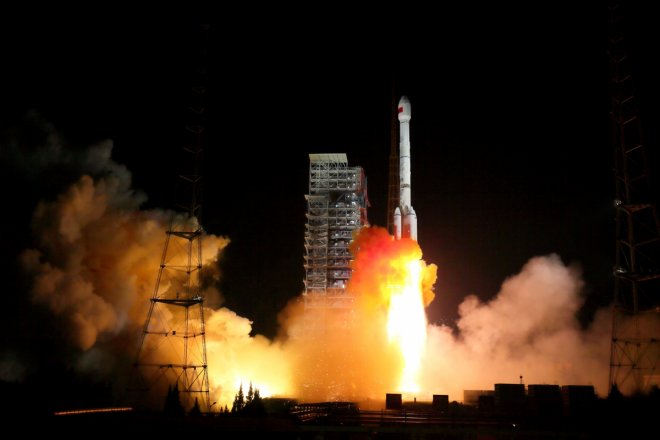
The launch of NASA satellite which will be used to study the behaviour of plasma located in the Earth's ionosphere has been shifted to early next year. The delay might provide engineers with the time required to resolve the hindrances related to the separation system on its air-launched Pegasus XL booster.
NASA announced on November 3 that the Ionospheric Connection Explorer, which would have launched on December 8, is not expected to take off before the early phase of 2018. More famous by the acronym ICON, the mission will ride on Orbital ATK Pegasus XL launcher into the orbit after dropping from L-1011 carrier jet over the Pacific Ocean on Kwajalein Atoll.
The space agency updated on their website that more time is being provided to the engineers in order to assess the separation component.
Elsayed Talaat, chief scientist of NASA's heliophysics division, stated that the ICON spacecraft is ready for pre-launch processing and the satellite built by Orbital ATK is already in the shipping container at the contractor's Gilbert, Arizona based assembly faculty. However, ICON's shipment to Vandenberg Air Force in California, where it would have been attached to the Pegasus rocket, was delayed. Talaat stated that the advisory committee has decided to postpone ICON's launch in order to resolve certain issues.
Pegasus XL rocket has been assembled partially in Orbital ATK's preparation building at Vandenberg. Once ICON arrives, ground crews will attach the satellite to the rocket. Pegasus will be then taken to the ramp at Vandenberg's airfield where it will meet its mothership, L-1011. A carrier plane will take Pegasus rocket across the Pacific to Kwajalein. The rocket comprises of delta wing and steering fins. Variants of Pegasus rocket have flown 43 times and accomplished 29 successful launches.
Thomas Immel, ICON's principal investigator at the University of California, Berkeley, said that engineers are examining a part in the rocket's separation systems, which were left unchanged since the Pegasus XL's last launch in December 2016. Initially, NASA planned to launch the ICON mission in June, but engineers required more time to inspect Pegasus rocket motors as they were mishandled during shipment to Vandenberg. This pushed the launch back to December thus delaying it.
ICON has been designed with a budget of $200 million, to be used in observing the ionosphere, Earth's upper layer of atmosphere. It will be monitoring weather patterns besides measuring temperature, winds and density of ionized gas.
ICON will probe the changes in the ionosphere and the layers which are seated deep down the earth's surface. Changes in the ionosphere can disrupt radio communications and GPS navigations, hence, a better understanding of how the changes occur in the ionosphere might help to curb such disruptions in the future.









